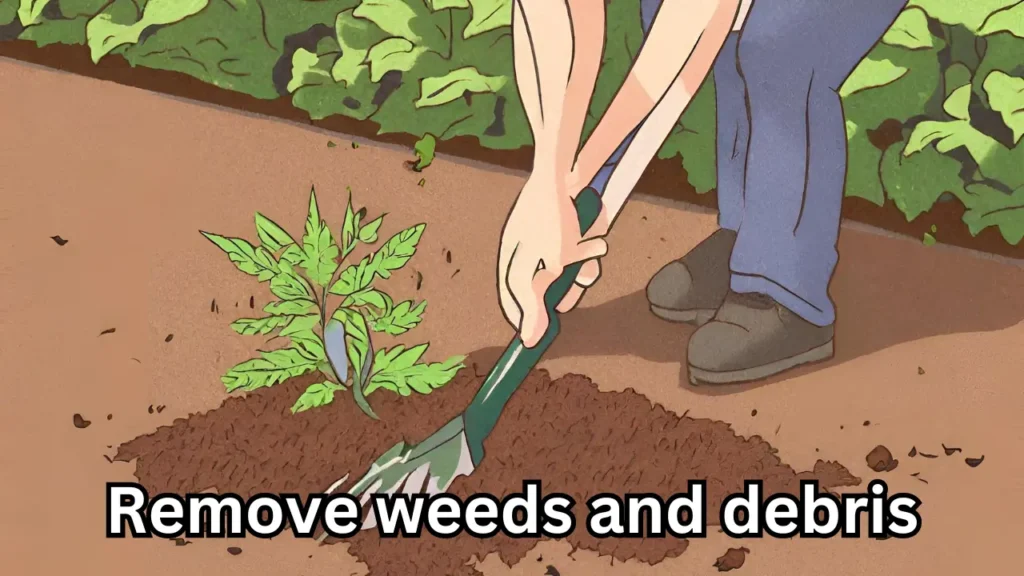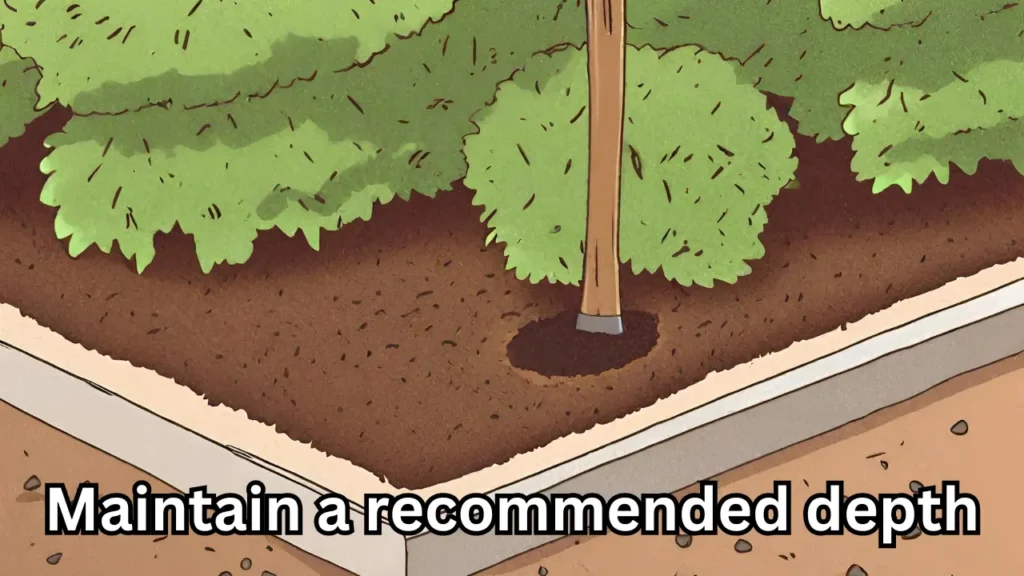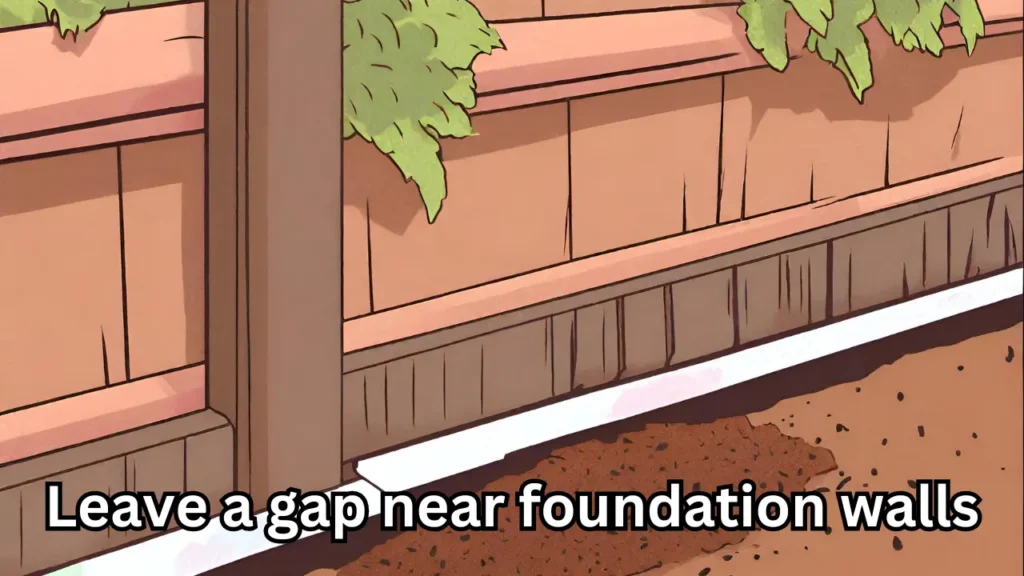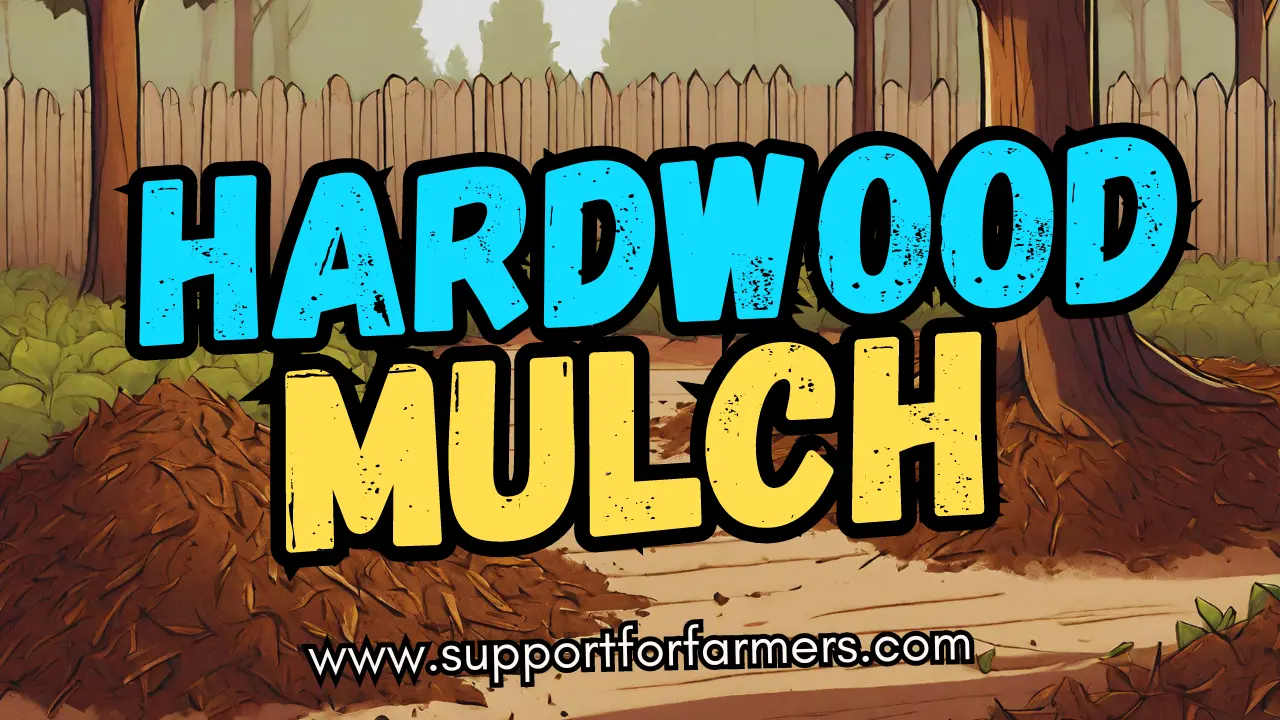A hardwood mulch is a layer of shredded bark and wood chips of deciduous trees, like oak, maple, and hickory, applied to the soil’s surface. We gardeners use hardwood mulch to conserve soil moisture. It also helps improve the soil’s fertility and health by reducing weed growth. Hardwood mulch also improves the visual appearance of the garden by adding warmth and texture to gardens and flower beds.
The key uses of hardwood mulch in landscaping are :
- Weed suppression: The hardwood mulch does not allow seeds to germinate and inhibits existing weeds from growing. It drastically reduces the need for weeding.
- Moisture conservation: The mulch consists of materials that are very good at trapping moisture. Hence, the mulch also helps to retain moisture in the soil, reducing the need to water in both hot and dry periods.
- Soil temperature regulation: Mulch also acts as an insulator. It traps the system’s internal heat, keeping it more relaxed in the summer and warmer in the winter, which helps the plant to grow.
- Soil enrichment: As Hardwood mulch gets decomposed over time, it converts into organic matter and releases nutrients, which in turn increases its fertility and structure.
- Erosion control: The hardwood mulch helps to control soil erosion to a great extent. The soil erosion is stopped since the top layer of soil is covered with mulch. Also, in the hilly and sloppy terrains, the hardwood mulch stops erosion by getting itself washed off instead of the soil.
- Aesthetics: It also makes the landscape more appealing by increasing its beauty. It enhances the whole area by giving a more natural vibe and increasing its overall appearance.
In addition to the benefits listed above, hardwood mulch is relatively cheaper than its alternatives. It is also very easy to apply. It is a resourceful material that can be used for many applications, making it popular among homeowners and professional landscapers.
There are different types of hardwood mulches available in the market. We have listed some of the popular options below :
- Shredded bark: Coarse or fine, offering texture and weed suppression.
- Double-ground mulch: Finely ground, perfect for adding nutrients and rapid plant growth.
- Aged/composted hardwood mulch: Rich in nutrients and microbes, ideal for vegetable gardens and flower beds.
- Dyed hardwood mulch: Add a pop of color with hues like red, black, or brown to match your theme.
- Specialty blends: Mix with shredded leaves or other materials for unique combinations.
Remember, each type of hardwood mulch has its strengths and weaknesses for different plants and environments. Do your research and choose the perfect match for your landscape!
How to Choose Right Hardwood Mulch
Finding the right hardwood mulch for your garden is a key factor for harmonious landscaping. For this, one needs to have a thorough understanding of critical factors that directly or indirectly affect the landscape:
Consider your trees and plants
Different plant species reciprocate growth with different types of mulches. For example, plants that thrive in acidic environments prefer pine bark mulch, like blueberries and azaleas. At the same time, most of the plants harmonize with hardwood mulch.
Climatic and Soil Influences
In hot, dry climates, mulches with slower decomposition rates, like shredded bark, help retain moisture. In cooler, wetter regions, faster-decomposing mulches, like double-ground mulch, can prevent excess moisture buildup.
In drier and hotter temperatures, the mulches show slower decomposition rates; for these types of climates, shredded bark would help to retain moisture, whereas in wetter and cooler areas, faster-decomposing mulches, like double ground mulch, can help to prevent excess moisture retention.
Soil pH also matters. If your soil is acidic, consider a less acidic mulch-like hardwood instead of pine bark.
Visual preferences
Hardwood mulches come in a range of textures and colors to match your garden’s landscape. You can choose from:
- Coarse or fine shredded bark for a rustic look
- Coarse shredded bark mulch
- Double-ground mulch for a smoother, more polished appearance
- Dyed mulch for vibrant color accents
Cost considerations
The mulch prices vary greatly based on their type and procurement source. Look for the best price by considering factors like quantity needed, delivery costs, and lifespan of the mulch.
How to Apply Hardwood Mulch
Applying hardwood mulch is an excellent way to enhance your plantation area, adding natural beauty. It serves many purposes, including weed suppression, moisture retention, and soil insulation. Here is a step-by-step guide to applying hardwood mulch correctly.
1. Remove weeds and debris
The first step before applying mulch is to prepare the plantation area and clear out any dead leaves, debris, or weeds. This would ensure that the mulch has a good connection with the soil and prevent weed seeds from germination. Removing weeds and debris for application of hardwood mulch.

2. Edge the bed
Using edging tools like shovels and spades, we can define the borders of planting beds. This will ensure that the mulch stays in a defined area and does not litter around, giving the bed an aesthetic view. Use a shovel to edge the bed to prevent mulch from spreading.

3. Lightly moisten the soil
One of the prime functions of the mulch is to retain moisture, so before laying the mulch on the ground, make sure to water the soil adequately but also make sure that the soil is not waterlogged. After watering, mulch settles to the ground and stays in its place. If it’s dry, the mulch won’t stick to the surface, and there is the risk of it getting blown away.

4. Maintain a recommended depth
We need to ensure that the amount of mulch we are applying differs for different vegetation types. 7-10 cm of mulch is ideal for flower beds and vegetable gardens. But trees and shrubs need a much shallower layer,i.e., at most 4-6-6 cm of depth.

5. Create a consistent layer
Make sure there is an even layer of mulch throughout the planting area. This would improve the aesthetic of the planting area and also improve resource management. Use tools like a rake or your hands to smooth any uneven area.

6. Avoid stems and trunks
Since mulch can retain moisture for extended periods, piling it against stems or trunks can cause these parts to develop fungus and rot. So, leave adequate space around the base of every plant.

7. Leave a gap near foundation walls
Make sure to leave a gap of 15-30 cm from any foundation walls to avoid any damage caused by moisture siding, which could weaken any structure.

8. Hardwood mulch application is done
You should always choose mulch based on your needs, climate conditions, and soil types. Some well-used options in mulch include shredded bark, wood chips, and cocoa mulch. Apply mulch during spring or early summer after the harsh winter conditions have passed. Re-apply mulch typically once a year or as per weather conditions. By sticking to these simple steps, you can easily enjoy its benefits and transform your landscape.
By following these simple steps, you can easily apply hardwood mulch to your landscape and enjoy its many benefits.

How to Maintain Hardwood mulch
Be observant during the first few weeks after applying the Hardwood mulch, as weeds might grow out. Gently pull them out in their early stage to prevent the spreading and formation of their roots. For this, you can use pre-emergent herbicide, but consider your plant and soil type before using one.
Add a new layer of fresh mulch once a year, preferably during spring or fall. Also, considering the soil and plant type, the ideal depth of 2-3 inches should be maintained. Even out existing mulch before adding new, remove decomposed and compact bits.
You should also maintain a gap between the base of the plant’s stem and mulch to prevent the rotting of existing plant roots. Choose a mulch that is suitable for your climate and landscape. Water the applied mulch regularly to ensure that the moisture reaches the soil.
Reapply fresh mulch throughout the year whenever needed, especially after heavy storms or rains. For effective suppression of weeds, herbicides reapply whenever needed or possible according to general instructions.
Conclusion
To make your landscaping experience aligned with being ecologically friendly, make sure that the mulch you are sourcing from is not sourced from an economically driven supplier but from a supplier who uses sustainably harvested wood. You can combine your mulch with pebbles, stones, or gravel to create pathways or decorative patterns. The Hardwood mulch is not just for its benefits but also a way to express your style and add a touch of your creativity as a nature enthusiast to your outdoor space.
Although Hardwood mulch has benefits, it’s essential to be aware of potential downsides. Its acidic nature can make the decomposition rate slower. Hence, it might only be suitable for some soil types and plants. But when applied correctly with proper research, it can be a point of attraction to any landscape, improving its design and function.
So, enjoy your landscaping journey with Hardwood mulch, get most of its functionality, and turn your planting area into a thriving ecosystem!
